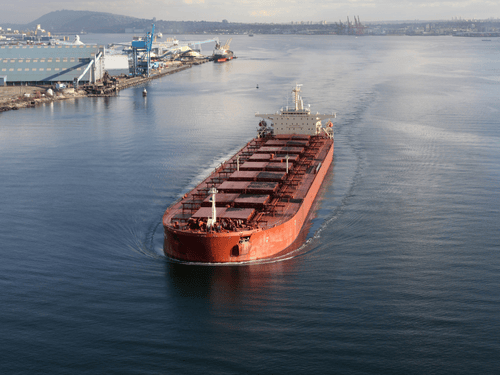Each supply chain has a weak point. Whether it’s a surprise strike, a weather catastrophe, or a new trade policy, disruptions are unavoidable. When they do, relying on a single carrier can escalate a little hiccup into a full-fledged shipping crisis.
The consequences add up quickly: missed delivery windows, stockouts, dissatisfied customers, and unforeseen fees. In a fulfillment scenario where timing is critical, a single link delay can have far-reaching consequences for the entire business.
That is why more firms are using carrier diversification as a long-term strategy for reducing risk, protecting schedules, and maintaining strong shipping operations.
What Carrier Diversity Actually Means
Carrier diversity entails collaborating with a network of transportation providers rather than putting all your trust in one. These partners can operate across many geographies and use a variety of freight modes, including trucking, intermodal, ocean, and air.
Spreading your shipping load among multiple carriers reduces your vulnerability to disruption and puts you in a better position to respond swiftly when something goes wrong.
Carrier diversity does more than merely improve supply chain safety. It makes it smarter.
Risks You Can’t Afford to Ignore

The transportation sector is full of moving parts, not all of them are under your control. For example, labor strikes can cause entire networks to freeze overnight. The danger of a UPS Teamsters strike in 2022, for example, highlighted how heavily businesses rely on a single source. In 1997, a similar strike halted UPS operations for 16 days, stranding thousands of small businesses.
The rail industry feared a similar destiny in late 2022. If it had gone through, 27.9% of US freight would have been stuck—right in the heart of the high holiday season.
Even if there is no labor dispute, mergers, acquisitions, or changes in service terms with your current provider can disrupt your shipping operations. Economic downturns, bankruptcies, and extreme weather can all result in abrupt capacity constraints. In situations like this, having a single carrier creates a single point of failure.
Geopolitical conflicts or natural calamities can also obstruct particular trade routes without warning. Without backup carriers or alternate routes, your controlled inventory and warehousing systems may be pushed to the limit.
How Carrier Diversity Builds a Stronger Fulfillment Strategy
Carrier diversity gives your business multiple lifelines. If one carrier is unavailable or delayed, you’ve already got alternatives lined up. This keeps your fulfillment moving and protects your inventory management from unexpected stock imbalances.
It also unlocks more flexible delivery options. When you need to ship to new regions or take on specialized freight, you’re not stuck trying to make one carrier fit every job. You already have a pool of partners ready to go.
And then there’s cost. If you only use one provider, you’re blind to what others might offer. By sourcing quotes across multiple carriers, you gain negotiating power and can better optimize your shipping spend, something that’s critical when margins are tight.
Carrier diversity also gives you the ability to scale. As your operations grow, so do your logistics needs. With a diversified setup, you’re not boxed into a one-size-fits-all service. You can expand lanes, upgrade delivery speeds, or explore regional hubs that better serve your customers.
Creating Carrier Diversity in Your Own Network

Start by building relationships across multiple freight modes. Trucking may be your go-to for fast domestic moves, but intermodal could lower costs on longer routes. For international deliveries, ocean freight is cheaper but slower, while air offers speed at a premium. Having options lets you match the right mode to each job.
Next, strike a balance between contract and spot market carriers. Contracts are great for regular, high-volume lanes where you want consistency and stable rates. Spot carriers help you stay agile, offering capacity when demand spikes or routes change.
Geographic diversification matters too. Partner with carriers based in different regions so you’re not affected by localized disruptions. It also helps when opening new fulfillment centers or branching into new territories.
If managing all this sounds like a full-time job, it often is. That’s where logistics partners come in. Freight brokers and forwarders already have broad carrier networks and the tools to manage your shipments efficiently. They can help you scale fast without sacrificing control.
Why This Matters More Than Ever
Today’s fulfillment environment demands resilience. Nearshoring trends are shifting manufacturing closer to home, e-commerce continues to raise customer expectations, and global instability remains a constant threat. Businesses that continue relying on a single carrier are one delay away from trouble.
Carrier diversity supports consistent shipping, which helps protect your inventory management and maintain service levels. It also complements professional warehousing operations, where timing and delivery accuracy matter just as much as storage.
The truth is, supply chain risk isn’t going away. But when you diversify your transportation partners, you build a buffer that keeps your business steady, no matter what comes next.
Final Thought
Carrier diversity isn’t about complicating your shipping process. It’s about giving your business the flexibility, protection, and control it needs to thrive.
If you’re serious about building a stronger, more adaptable supply chain, now is the time to evaluate your carrier network. A little planning today can prevent a lot of disruption tomorrow, and that’s a win for your fulfillment, your customers, and your bottom line.

